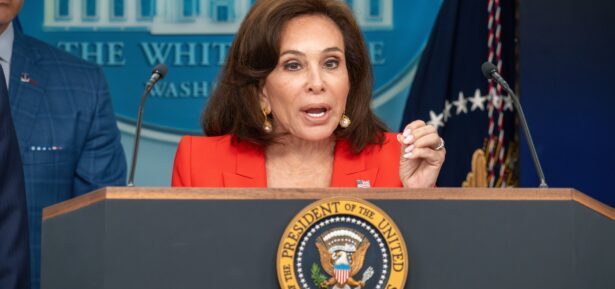
Credit: Unsplash
The Federal Reserve announced today that all 31 banks participating in its annual stress test have demonstrated their ability to withstand a severe hypothetical economic downturn while maintaining their capacity to lend to consumers and businesses.
In this year’s stress test, each bank met the requirement to absorb losses and retain capital above the minimum levels mandated by regulatory standards. The stress scenario included assumptions of a surge in unemployment to 10%, a 40% plunge in commercial real estate values, and a 36% drop in housing prices.
“This year’s results show that under our stress scenario, large banks would take nearly $685 billion in total hypothetical losses, yet still have considerably more capital than their minimum common equity requirements,” said Michael Barr, the Fed’s vice chair for supervision. “This is good news and underscores the usefulness of the extra capital that banks have built in recent years.”
The stress test, an annual regulatory exercise, ensures that banks maintain adequate reserves for potential bad loans and determines the limits on share repurchases and dividends. This year’s test included major institutions such as JPMorgan Chase, Goldman Sachs, American Express, and regional lenders like Truist.
Despite the aggregate capital levels falling by 2.8 percentage points—a steeper decline than last year’s—no bank faced significant challenges from the test’s assumptions, which were consistent with those used in the 2023 stress test. The decrease in capital levels is attributed to the banking industry’s increased holdings of consumer credit card loans and downgraded corporate bonds, coupled with squeezed lending margins compared to the previous year.
“While banks are well-positioned to withstand the specific hypothetical recession we tested them against, the stress test also confirmed that there are some areas to watch,” Barr added. “The financial system and its risks are always evolving, and we learned in the Great Recession the cost of failing to acknowledge shifting risks.”
Additionally, the Fed conducted an exploratory analysis on funding stresses and a potential trading meltdown, focusing on the eight largest banks. The results showed that these banks could withstand a sudden increase in deposit costs alongside a recession. In a scenario where five large hedge funds face collapse, the big banks would incur losses between $70 billion and $85 billion. The Fed noted that while the banks have significant exposure to hedge funds, they are resilient to various trading book shocks.
-
Credit: Envato Elements How Do You Know If You Are Eligible? Some Americans just got a $1,703 check in...
-
Credit: Shutterstock It was supposed to be a night under the stars for Coldplay fans. But for Astronomer CEO...
-
Credit: Envato Elements Avoid These Tourist Spots = Too Crowded! It’s wild how quickly a beautiful, peaceful spot...
-
Credit: Unsplash The Real Situation in Texas Right Now Over the July Fourth weekend, a sudden and violent surge...
-
Texas is In Trouble Over the Fourth of July weekend, Central Texas was hit by catastrophic flash floods that...
-
How Exactly Is This Bill Making America Great Again? President Trump is pushing hard for his latest budget bill,...
-
Credit: Envato Elements Will These Cryptos Steal the Spotlight by Year-End 2025? After a wild start to 2025 filled...
-
Credit: Envato Elements Victims’ families call out prosecutors over rushed plea deal for Idaho murder suspect Bryan Kohberger In...
-
Credit: Envato Elements Thunderbolts, Tuxedos and a Touch of Chaos as Jeff Bezos and Lauren Sanchez’s Star-Studded Pre-Wedding Party...
-
Credit: Shutterstock Did The U.S. Just Make a Big Mistake By Bombing Iran? Donald Trump just launched airstrikes on...
-
Credit: Unsplash Why Don’t We Just Tax the Rich? Every year, millions of Americans pay their taxes expecting that...
-
Credit: Unsplash Should You Be Worried About Iran Attacking the USA? There’s a lot going on in the world...




















